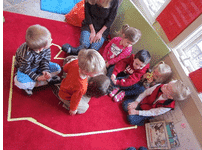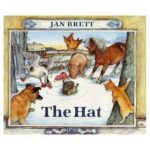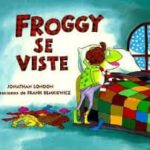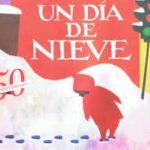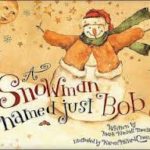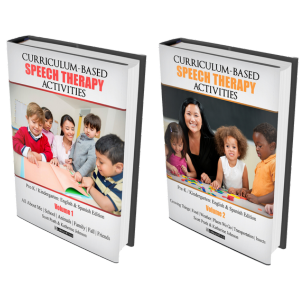(Speech) sleigh bells ring, are you listenin’?
Off the shelves, books are openin’
A beautiful sight
We’re happy alright
Readin’ in speech, language wonderland!
Let’s be honest, the temperature isn’t the only thing that decreases towards the end of December. Timelines shorten, non-therapy time is absorbed by administrative tasks, and therapy ideas begin to wane. Nonetheless, therapy must go on! What are the best winter speech and language books to use? We got together this past Monday and combined our efforts by compiling a list of our favorite books to use in therapy for the frigid months. Grab a mug of tea, sit back and take in some of the best literacy-based ideas. We are excited to share some of our frosty favorites with ideas for leveraging the excitement of the holidays into therapy progress.
There Was An Old Lady Who Swallowed a Bell; by Lucille Colandro
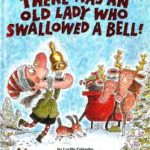 “There Was an Old Lady Who Swallowed a Bell is a fun way to work on vocabulary and sequencing. The repetitive structure of the book helps to build language skills. I’m excited to pair a surprise bag with the book as a pre-reading activity where the students draw out the various items in the book such as a bell, bows or gifts. Then, students describe the items and create sentences.” – Anna
“There Was an Old Lady Who Swallowed a Bell is a fun way to work on vocabulary and sequencing. The repetitive structure of the book helps to build language skills. I’m excited to pair a surprise bag with the book as a pre-reading activity where the students draw out the various items in the book such as a bell, bows or gifts. Then, students describe the items and create sentences.” – Anna
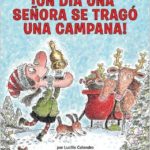
Also available in Spanish
Links and Activities:
Makinglearningfun.com also has some great “Old Lady” materials :
Make&Take Art Supplies for the Old Lady
Literacy Activities for the Old Lady
Math Activities for the Old Lady
Shoe Tying Practice for the Old Lady
The Gingerbread Man: by Catherine McCafferty
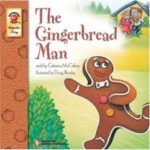 “I love this book because of the repetitive phrase. Both Spanish and English versions of the book has the same rhyme and meter. I usually do a literacy-based lesson around this topic for a couple of weeks. There is a recipe for gingerbread cookies that I like for my students to make right before going on winter break. And, I have included a website for some free printables.” – Patricia
“I love this book because of the repetitive phrase. Both Spanish and English versions of the book has the same rhyme and meter. I usually do a literacy-based lesson around this topic for a couple of weeks. There is a recipe for gingerbread cookies that I like for my students to make right before going on winter break. And, I have included a website for some free printables.” – Patricia
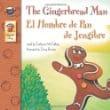
Also available in Spanish
Links and Activities:
Pre-reading activities can include talking about what is “gingerbread” and introducing new vocabulary. Students can make connections about cookies! I like to introduce all of the characters in the book before reading it and then ask prediction questions. We graph our predictions on a big piece of paper.
Google has a ton of downloadable gingerbread man materials
1.) Who makes the gingerbread baby?
2.) Who eats the gingerbread baby?
For one of our post-reading activities, we pull out our charts and change our answers at the end.
During therapy time, we can also use the Cookie Doodle app to make gingerbread men and practice following directions.
The Mitten: by Jan Brett
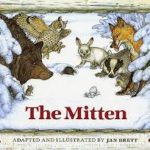
Links and Activities:
Mary also loved using The Mitten. Here are her ideas:
1. Pre-K activity – masking tape mitten on floor. Last year I made it even more fun and used a large parachute with students in the pre-k artic program (i.e., PEAR Program in the Round Rock Independent School District) and let them crawl under the parachute (into the mitten). You could even give them masks for all of the animals to pretend, or they could practice saying, “I am in the mitten. Joey is not in the mitten…”
Click here for this idea from teachpreschool.org: I had a large mitten shape made out of tape on the floor to use as our mitten prop. Instead of animals, we had children climbing in our mitten to keep warm. As the story went along, each child was invited to climb into the mitten and since our mitten was getting full, the children had to adjust how they sat in the mitten so they would all fit inside. And at the end of our story, all the children were thrown out of the mitten because someone gave a big sneeze! Only our mitten didn’t fall apart!
2. Compare and Contrast with similar story The Hat
A great lesson with the books The Mitten and The Hat is to compare and contrast the two books with your class. As a group, complete a Venn Diagram on the two stories. After you have compared the two books as a class, have your students team with a buddy and complete a compare and contrast sheet.
Spanish versions of these two books: El Miton and El Sombrero
The Mitten sentence strip_Spanish
The Mitten Sentence strip English
Those Shoes: by Maribeth Boelts
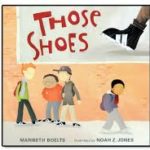
Links and Activities:
Organize a clothing (and shoe) drive for children
Have students draw a pair of desired shoes–Compare and contrast shoes
Have student do a story retell with students on a different campus working on the same skills via Skype[hr]
Froggy Gets Dressed: by Jonathan London
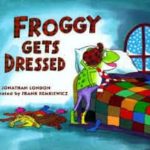
Links and Activities:
I use this book to target a few commonly addressed goals:
- Categorization (clothing, things that are cold)
- Sequencing for how to get dressed (in the correct order)
- Artic- there are many opportunities for initial /fr/ and final /s/, in English and Spanish
- Syntax- there are repetitive lines on each page, describing Froggy either putting on or taking off different articles of clothing
- Who, what, where, when, and why questions
There are TONS of other resources out there to use along with this story that I love to use as pre- and/or post-reading activities:
- Froggy pictures and manipulatives (as well as English sight words that are great to use for syntactic goals):
- Froggy Gets Dressed Fun Pack
- Winter clothing paperdolls
The Snowy Day by Ezra Keats
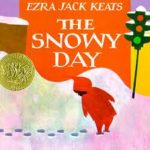
Snowmen at Night: By Caralyn Buehner
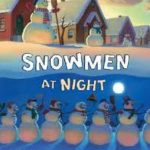
There are 24 pages that can be used in therapy such as compare and contrast and WH questions in our Storybook Intervention Templates.
Additional Snowman Favorites
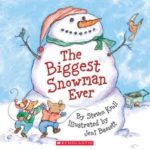
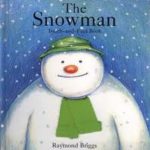
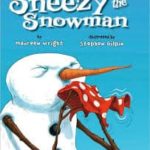
We are excited to share our best winter speech and language books! Do you have a favorite? Please share with us!



